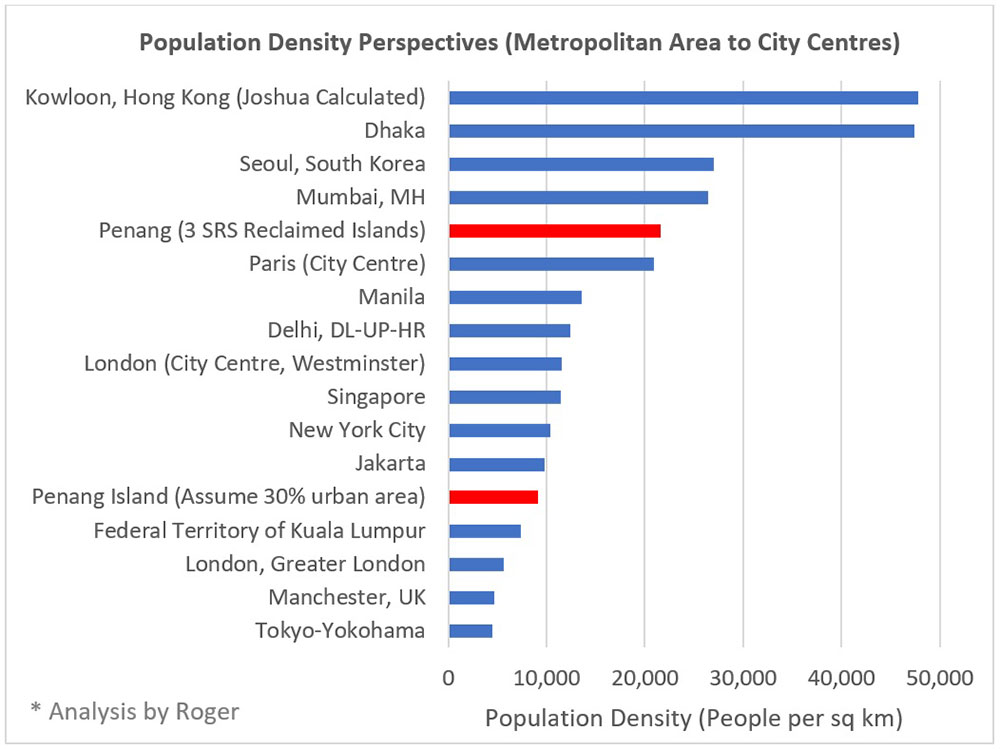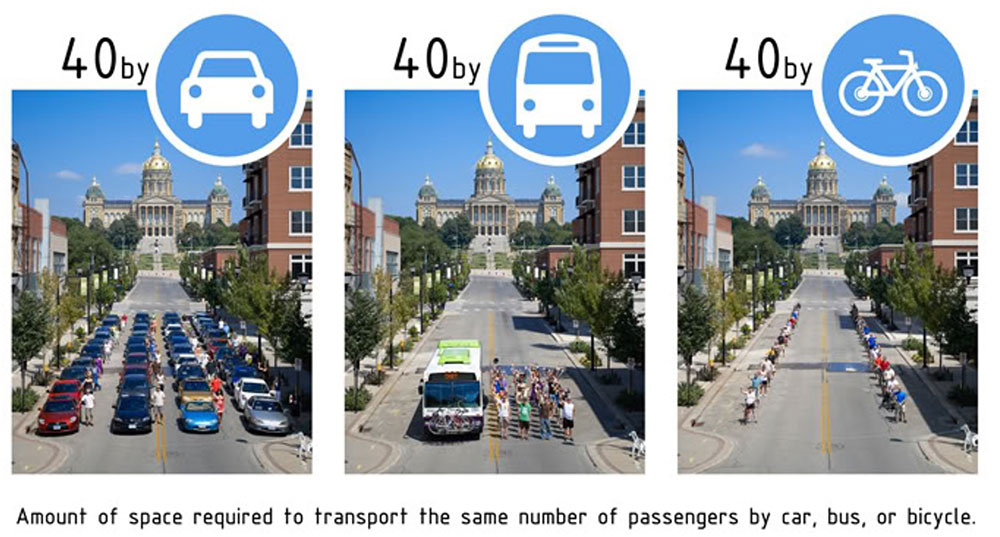COMMENT | Over the past week, members of the public have shown a renewed interest in the debate on the Penang Transport Master Plan (PTMP), and advocates of the PTMP have been quick to come up with supportive arguments to justify the mammoth RM46 billion project.
The main aim of this article is to critically analyse the validity of the different arguments raised by proponents of the PTMP, as well as laying down a list of important questions on the PTMP that remain unanswered by the Penang state government since December 2016.
By and large, I believe that the general public would agree that an open debate on the PTMP would significantly improve transparency, instead of relying on internal communications where unfavourable viewpoints on the present form of the PTMP could be swept under the carpet and left unattended.
Firstly, it appears that the use of dubious population projections by the Penang state government in the PTMP feasibility study has been reaffirmed for the second time by representatives of the Penang state government.
For example, former MBSP councillor Joshua Woo justified that a projected population density of 21,636 people per square km in the three SRS reclaimed islands was reasonable, given that urban flatlands in Hong Kong such as Kowloon could theoretically achieve urban population densities in excess of 50,000 people per square km.
However, this reasoning alone fails to grasp the magnitude of the absurdity of the projected population density figures used for the three SRS reclaimed islands.
In order to have a better perspective of the population density figures, I have compiled the table below, which consists of different population density figures covering different city centres and wider metropolitan areas based on data availability.
While it is true that the population density for Kowloon is 121 percent higher than the reclaimed islands, the projected population density for the SRS reclaimed islands (21,636 people per square km) is still higher than the city centres of London (11,522 people per square km) and Paris (20,909 people per square km).

What is so interesting in or around the three SRS reclaimed islands to the point that population density is projected to be higher than the city centres of London and Paris?
Why would 367,379 Penangites choose to squeeze themselves in these islands by 2030 when there are less dense areas available elsewhere in the state?
Is such a population density figure justifiable, given that Penang is not even one of the top three biggest cities in Malaysia? This is not rocket science. Even students in elementary school would find these density figures ridiculous and it would be shameless for the Penang state government to continue defending the use of these figures.
We once ridiculed BN politicians for not questioning obvious flaws. It appears that the lack of questioning of these population density figures by the Penang state government will make them a laughing stock.
Disruptive technologies
Proponents of the PTMP have also justified the need for more roads and highways to “future-proof” the city as the use of disruptive technologies, such as ride-sharing services and autonomous vehicles, become more widespread.
While it is true that ride-sharing initiatives could marginally reduce the number of private cars on the road, we have yet to witness any city authority shifting its transport policies from mass transit back to road building to accommodate for the future use of autonomous vehicles and ride-sharing initiatives.
It is well known that Singapore has been one of the world leading cities in pioneering the development and use of autonomous vehicles and ride-sharing initiatives.
However, Singapore continues to heavily focus on improving mass transit, as reflected in the construction of three new MRT lines (Thomson-East Coast MRT Line, Jurong Region Line, and the Cross-Island Line). This is in addition to the fact that Singapore already has five existing MRT lines and it's car modal share is only 33.2 percent.
Additionally, Singapore also adopted a Vehicle Quota System since May 1990 to restrain the growth of private vehicles in the city-state, where it is mandatory for Singaporeans to obtain a Certificate of Entitlement (COE) through an auction platform in order to register a new vehicle.
Despite the arrival of “disruptive” ride-sharing and autonomous technologies in recent years, Singapore’s Land Transport Authority (LTA) continues to cut the allowable annual vehicle growth rate in Singapore.
Since February 2018, the allowable annual vehicle growth rate is set at zero percent, meaning that the absolute number of vehicles on Singapore’s roads is expected to remain constant in the foreseeable future.
While SRS Consortium frequently used Singapore’s upcoming North-South Expressway in its engagement sessions to justify the case for even more highway constructions in Penang, such arguments are highly misleading.
The North-South “Expressway” – originally conceived as a 21.5 km expressway – has since been redesigned as a North-South “Corridor” (NSC) to better enable cycling and walking, and will be Singapore’s first integrated transport corridor featuring continuous bus lanes and cycling trunk routes.
Therefore, why was inaccurate information presented by SRS Consortium in its engagement sessions? Is this a desperate attempt to mislead the public and rally support for the RM46 billion SRS transport shopping spree?
Despite Penang having one of the highest car modal share in the world (96.8 percent), the state government continues to prioritise on vehicular traffic over mass transit, as reflected by the construction of six major road infrastructures (PIL 1, PIL 2/2A, North Coast Pair Road, Ayer Itam to LCE highway, Inner City to LCE highway, and the Penang Undersea Tunnel), and only one new LRT line (Penang International Airport - Komtar).
Given that Singapore and Penang islands face similar land constraints, why is traffic congestion a regular occurrence in Penang but not in Singapore? The answer clearly lies in formulating the right transport policies.
Any form of “disruptive technology” that still relies heavily on cars and road networks fails to address the space inefficiencies of vehicles as a means of transport. To illustrate this point, the figure below shows the amount of road space required to transport the same number of passengers by car, bus or bicycle.

It is clear that focusing on mass transit and sustainable transport modes is a more effective solution to enhance urban mobility, especially for a growing city such as Penang island, where free land will always be a scarce resource.
Rather than replacing entire trips made by private vehicles, several studies have shown that ride-sharing services and autonomous vehicles are more suited to facilitate “first mile, last mile” links to access mass transit stations.
Critical questions
Therefore, the justification of more road construction as a result of the arrival of “disruptive technologies” is not credible and does not make any logical sense.
If ride-sharing initiatives are expected to reduce the number of private vehicles on the roads, why is there even a need to increase Penang’s road capacity in the first place? Could the Penang state government kindly name us one city that plans to promote more car usage and construct more roads as a result of the surging popularity of ride-hailing services?
On the whole, a list of critical questions on the PTMP remains unanswered by the Penang state government since they were first raised in 2016 by myself and various NGOs:
- Given that the car modal share for Penang currently stands at 96.8 percent, how can the state government ever hope to achieve its 40 percent public transport modal share target by 2030 if it continues to focus heavily on roads and private vehicles?
- While the three proposed highways are only expected to resolve traffic congestion for inter-urban trips, what plans does the state government have in place to resolve localised traffic congestion within urban centres?
- What is the logic behind the argument of the “PTMP improving city liveability by promoting the use of personal vehicles” when recent health studies clearly show that an increased exposure to vehicle emitted nitrogen oxides (NOx) and soot particles greatly increase the risk of cardiopulmonary diseases and premature mortality?
- Why did Penang choose the SRS-recommended LRT and monorail as the preferred public transport systems, as opposed to trams and BRTs as recommended in the state’s officially adopted Halcrow Plan, without doing any comparative financial cost-benefit analysis of the different systems?
- What is the calculated Benefit-Cost Ratio (BCR) for the present-form PTMP as proposed by the Penang state government and the alternative PTMP proposed by Penang Forum? Have they been compared?
Given that the BCR is the most fundamental metric used in feasibility studies to compare different projects, it would be very alarming if the Penang state government fails to provide us with a comparison of the BCR values between the present form and the alternative PTMP (as proposed by Penang Forum).
The Penang state government approved over RM300 million for feasibility and detailed design studies for the tunnel and three highways on Penang island, projects that were deemed as low priority by its own transport consultant study, Halcrow.
But it does not see the need to spend a small amount to do a comparative financial feasibility study on the different public transport systems before choosing the LRT and monorail, which happen to be the most expensive to construct, operate and maintain.
What is with the rush to approve Penang’s biggest infrastructure project to date when these simple questions cannot be adequately answered?
Governments should never be afraid to change their minds based on evidence. It is worth noting that smoking and lung cancer have a lower statistical correlation than car modal share and highway-building, yet people still choose to listen to their doctors and remain sceptical about NGOs and transport planners.
The Penang state government should stop labelling NGOs and transport planners that do not conform to the present-form PTMP as “enemies” of the state.
Perhaps a good starting point would be to adopt the UK government’s “Green Book on Appraisal and Evaluation” as a fundamental guideline to assess different PTMP proposals to enhance transparency and restore public confidence.
ROGER TEOH is a PhD postgraduate studying at the Centre for Transport Studies, Imperial College London.
The views expressed here are those of the author/contributor and do not necessarily represent the views of Malaysiakini.

